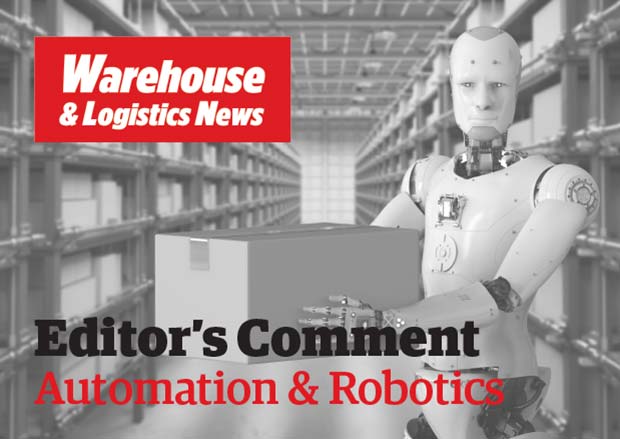E-commerce has exploded in recent years, a trend which has accelerated still further since the onset of the Covid-19 pandemic. This growth in delivered goods puts more pressure on warehouses to meet the demand. To keep up with the market, warehouses are becoming more dependent on automation and robotics.
This article was first published in the August 1st 2021 issue of Warehouse & Logistics News, subscribe to the magazine by clicking here.
 Well done to Toyota Material Handling which has successfully delivered more than 250 automated projects across Europe based on the widest range of new technologies that fit a client’s needs and drive productivity, efficiency and lower overall supply chain costs. The company works with customers to determine the specific challenges they face and tackle them one step at a time. Breaking the process down into small modules gives clients essential scalability and means that, if they wish to, customers can partially automate their processes while retaining the option to introduce more automated technology as future demands change.
Well done to Toyota Material Handling which has successfully delivered more than 250 automated projects across Europe based on the widest range of new technologies that fit a client’s needs and drive productivity, efficiency and lower overall supply chain costs. The company works with customers to determine the specific challenges they face and tackle them one step at a time. Breaking the process down into small modules gives clients essential scalability and means that, if they wish to, customers can partially automate their processes while retaining the option to introduce more automated technology as future demands change.
Congratulations to LAC Conveyors & Automation, leading provider of conveyor systems and automation solutions, which recently announced the new and exclusive partnership with Exotec to sell and promote the revolutionary Skypod System in the UK. The Exotec Skypod System is unique to the UK logistics and automation arena. It offers flexibility depending on volumes of growth, a short lead time from order to installation, and tote retrieval capabilities like no other system.
Interesting to hear how, using smart algorithms, TGW take data that has already been provided by sensors and link and merge these data in an intelligent way that allows to make very precise statements about the condition or wear of components. It saves expenses because no additional sensors must be installed. TGW’s Rovolution picking robot measures the status of the vacuum of the gripping device. If there is a pressure loss, due to the dust load of the environment, for example, this is immediately spotted and action can be taken.
Leuze is introducing the latest addition to the BCL series with the new stationary bar code reader BCL 200i. Ideal for container and tray identification, it is especially suited to conveyor systems with limited installation space. The new BCL 200i is a 1D bar code reader with integrated industrial interfaces and simple PROFINET configuration.
Collaborative robots could help tackle a looming labour shortage in UK warehouses by addressing the barriers deterring people from working in the sector, according to a new survey by fulfilment solutions provider 6 River Systems. The survey by 6 River Systems, which makes Chuck, a collaborative picking robot, suggests that people are put off working in warehouses and fulfilment centres by the physical nature of the work, which often involves pushing a heavy trolley for miles each day to pick or pack items.
As robots and other automated machines reduce in price, they are set to fill the labour shortage and help the warehousing sector meet the growing demand for e-commerce.
George Simpson
Features Editor





Comments are closed.